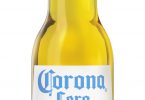Opportunities for beer in 2021 & beyond

IWSR reports that overall, the industry is likely to see a decline in beer consumption of around 9% across 19 key markets (over 2019-2020).
Beer markets in Italy and the UK were amongst those particularly hard hit due to Lockdown restrictions reports IWSR in its Opportunities for beer in 2021 & beyond report.
Traditional inbound tourism hubs continue to hurt too while some brewers also faced legislative issues such full bans on the sale of alcohol in South Africa and India and a ban on domestic brewing in Mexico.
Changes in off-trade consumer purchasing behaviour such as a tendency to purchase multi-packs and less time spent browsing meant that some players had to adapt to new packaging offerings and/or new distribution channels.
IWSR reports that overall, the industry is likely to see a decline in beer consumption of around 9% across 19 key markets (over 2019-2020).
But amidst these challenges there are bright spots.
Market recovery
IWSR’s research shows that some beer markets will emerge from 2020 relatively unscathed: beer proved remarkably resilient in Japan, for example, especially in the face of a strongly-advancing Ready-To-Drink category. Although beer in China will see a loss in volume of around 7% in 2020, the decline has not been as bad as many feared it could be, primarily as restrictions had largely been lifted by the key Summer months.
Looking forward, developing markets will continue to provide growth opportunities for brewers. Even before Covid-19, many developed beer markets had stagnated in recent years. Key players have invested heavily in increasing their brewing capability and distribution networks across developing markets.
Expanding beyond beer
As consumers moved to the at-home occasion, the trend for convenience has helped to shape purchasing behaviours. In markets such as the US, the RTD category, which includes hard seltzers, has been taking share from beer.
RTDs provide a growing opportunity for brewers to diversify their product portfolios.
Changes in purchasing behaviour propel e-commerce
As with the wider beverage alcohol industry, Covid-19 has propelled the value of the alcohol e-commerce channel. Heineken, for example, reported that Beerwulf, its direct-to-consumer platform in Europe, nearly doubled its revenues in 2020 while in the UK its revenues tripled. Online sales of its home-draught systems grew as well.
Beer has traditionally under-traded online, primarily due to the channel offering lower margins. However this will change as consumers continue to buy more groceries online and beer is included in the weekly shop. This is especially true in the US, where IWSR expects sales of online beer to grow rapidly as supermarket chains increasingly invest in the channel.
Online beer sales hold the greatest market share in countries such as Japan, the UK and the US.
The entrepreneurial spirit of small-batch players
Craft breweries, which tend to be more dependent on the on-trade, have driven interest in the global beer category and revitalised its fortunes in many markets. IWSR believes that the entrepreneurial spirit of the sector means that craft brewery regeneration will be quick.
In the US, for example, IWSR has seen the pandemic lead to a ‘buy local’ approach amongst some consumers which will benefit small-batch players.
Innovation in the No/Low space reignites the category
No- and Low-Alcohol Beer is a bright spot for the category as moderation and wellness trends continue to resonate with consumers. IWSR data shows that, to date, most volume has come from No-Alcohol rather than Low-Alcohol Beer across 10 key markets.
Broadly, Low-Alcohol Beer is giving way to No-Alcohol offerings, particularly in markets such as Australia, France and the UK.
Spain, for example, is seeing a shift from Low- to No-Alcohol Beers as consumers seek healthier choices and view the newer 0.0% brands as more modern.
While No-Alcohol Beer has existed for decades, in markets like the US No-Alcohol Beer has premiumised through the release of No-Alcohol versions of non-lager styles, long the domain of No-Alcohol Beer.
More recent No-Alcohol styles, such as IPAs, stouts or porters, are starting to make a real impression, driven particularly by new challenger brands, many of which are not linked to traditional brewing. The recent No-alcohol extension of Guinness – despite teething issues – will help to underline that No-Alcohol Beers are no longer the sole domain of lagers, states IWSR.
While several key beer players continue to steer the No/Low Beer category, the market is fragmented with a number of smaller brands vying to establish themselves as market leaders in this space. The segment is likely to become even more of a focus for smaller craft producers who’re able to bring a diverse range of products to the market in future.








